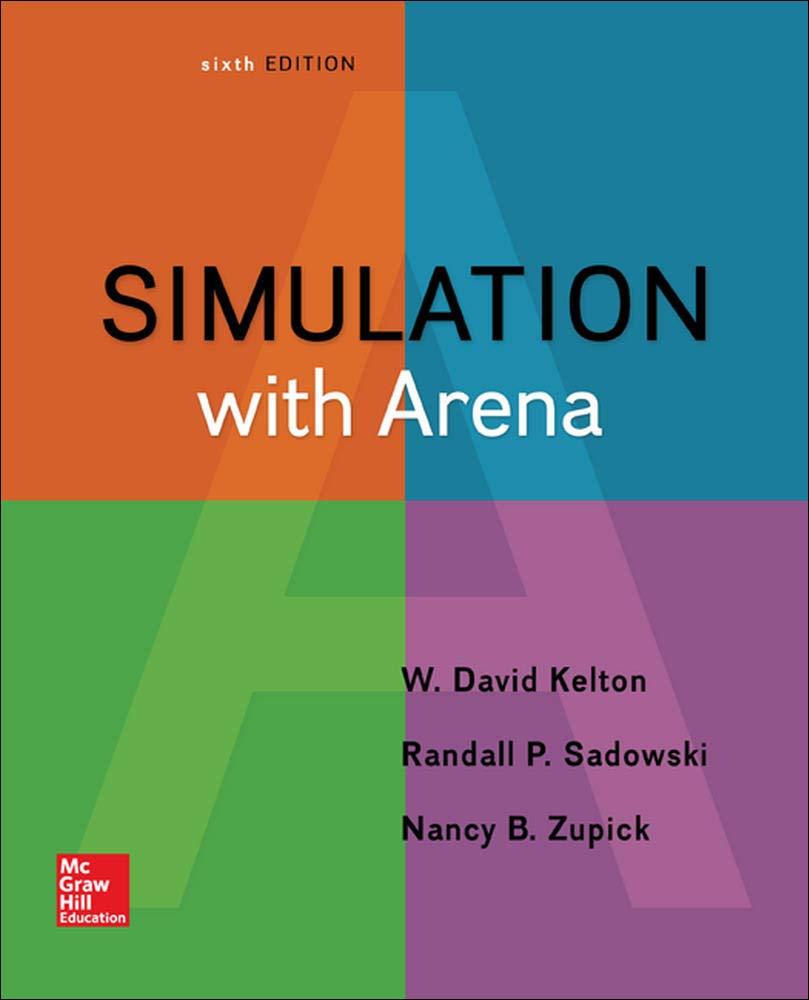A grocery store has three checkout lanes (checkout 1, checkout 2, and checkout 3), each with a
Question:
A grocery store has three checkout lanes (checkout 1, checkout 2, and checkout 3), each with a single checker. Shoppers arrive at the checkout area with interarrival times having an exponential distribution with mean 2.4 minutes. The shoppers enter the lane that has the fewest number of other shoppers already in the queue (not counting any shopper already in service at the checkouts). If there are ties for the shortest queue, the shopper will join the lowest-numbered checkout (that is, 1, 2, or 3). The checkout service time for all shoppers follows an exponential distribution with a mean of 6.35 minutes regardless of which checkout they choose. Create a simulation of this system and run it for a single replication of 48 hours (starting empty and idle, and with the f rst shopper’s arriving at time zero) to determine the average and maximum time from when the shopper arrives at the checkout area until they complete their checkout. Also observe the average and maximum of each of the three queue lengths, and the utilization of each of the three checkers. Add a plot to track the length of each queue on the same set of axes, color-coded, and animate your queues and resources. Put a text box in your model containing a table of your results, and comment brief y on why they are consistent with both the queue-choice and tie-breaking rules.
Step by Step Answer:

Simulation With Arena
ISBN: 9780073401317
6th Edition
Authors: W. David Kelton, Randall Sadowski, Nancy Zupick




